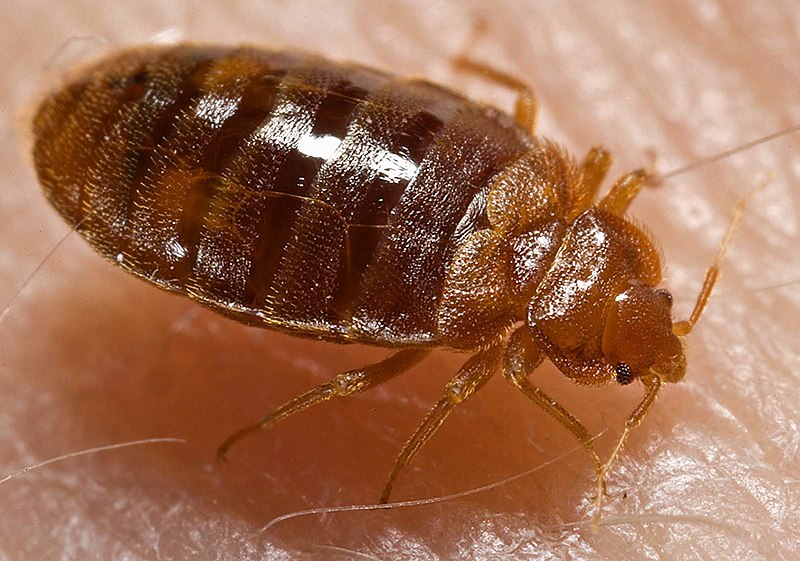
Emma, owner of the best eyes in Rothamsted, is running off to do a month's fieldwork in Argentina and has left me in charge of the colony of bed bugs she is studying. This was probably not a wise move given my previous form, but I'm doing my best to ensure they remain well fed,
watered and contented specimens of bedbuggery.
Bed bugs are often confused with dust mites, but are completely different creatures; dust mites are microscopic, whereas bed bugs (I apologise for the obnoxiously middle class comparison but it was the best I could come up with) are about the size of a grain of quinoa. Dust mites feed on shed dead skin - dust - whereas bed bugs actually pierce skin and suck blood, causing an itchy rash. You'd know if you had bed bugs, but everyone's probably got dust mites in their bed (and if that freaks you out, you've probably got follicle mites too).
Emma's bugs are fed on sheep's blood, heated to body temperature, which they suck up through a Parafilm membrane. This is obviously a rather unnatural situation as in the wild they would be extremely unlikely to encounter a sheep in a bed (at least outside of a certain rainy corner
of the British Isles from whence my grandparents hail) but the bugs don't seem to mind. The most difficult aspect of this setup is that I have to get sheep's blood, which is red, into the feeder, which after it's been used once is red, under a red light (which the bugs can't see, so they think it's night time when they feed). Putting in too little means hungry bugs, too much means a scene from a Hammer Horror movie which at least I can't see properly because everything's red. Apparently the room looks quite horrific if the light is ever turned on.
This might sound strange coming from someone who does, after all, work on shit-eating maggots that turn into blinding, snot-sucking flies, but I don't find bed bugs endearing in the slightest. Although unlike old sorbens they're not known to transmit any human disease, they have some
decidedly unpleasant habits (I know, again the words "pot" and "kettle" spring to mind).
They mate by a proccess called traumatic insemination - as the female gorges herself on blood her adbomen swell, exposing a vulnerable groove on her side into which the male stabs his spiked penis and injects sperm directly into her body cavity which isn't exactly good for her health - mating dramatically reduces the female's lifespan. This just goes to show how evolution is undirected by any concept of fairness - if there was an intelligence in charge of it all it should by rights have equipped the female with a few spikes of her own at the very least, and probably a tiny homopteran-sized taser. Instead the female has adapted by developing a pouch with a high concentration of immune cells directly under the insemination site, to at least help deal with some of the bacteria that hitch a ride.
(Interestingly the balance of power between the sexes lies is slightly different with my flies - if a male mounts a female and she decides she's not interested she'll kick him off, often shredding his wings with the spikes on her hindlegs. As a cohort of flies ages it gets easier for me to tell the males and females apart - the males are the wingless ones walking around on the floor of the cage, and presumably wondering if she was worth it.)
Bed bugs also have some rather unsavoury habits when it comes to hygiene - after feeding on blood they waddle off to a nearby refuge, a dark, damp crack in the bedframe or the wall. Hoards of them hide there to digest their meals, and the refuge quickly becomes filthy with their excreta and crawling with bacteria and fungi, the reason a female needs such a high concentration of immune cells to deal with the traumatic insemination. Given how unsanitary their refuges are it's remarkable that they don't transmit any human diseases, but as I say no evidence of this has ever been found. It's really the poor old sheep who have most to fear from
bed bugs.
No comments:
Post a Comment